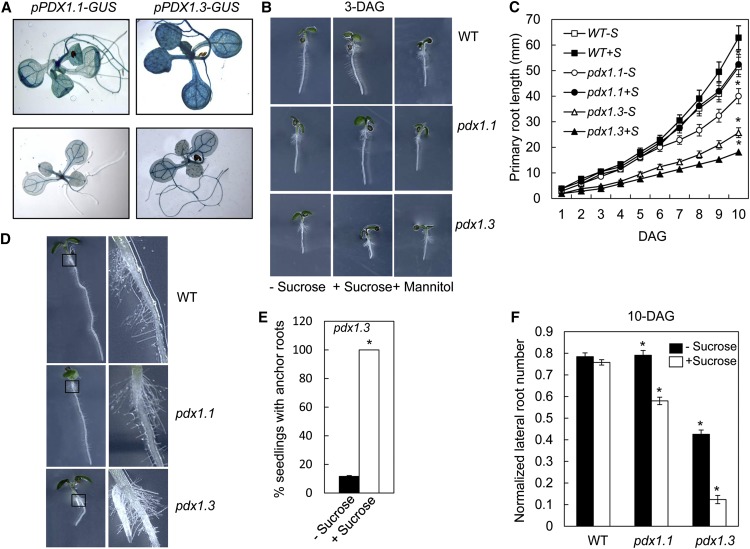Figure 1.
Gross divergence in the morphology of pdx1.1 and pdx1.3. A, Staining of the promoter-GUS fusion lines pPDX1.1:GUS and pPDX1.3:GUS at 37°C (top row) and 25°C (bottom row) in the Col-0 background. B, Root growth at 3 DAG of pdx1.1 and pdx1.3 plants grown in the presence of 1% (w/v) Suc compared with wild-type (WT) Col-0; pdx1.3 seedlings grown in the presence of the osmoticum mannitol (1%) are also shown. C, Kinetics of root growth of pdx1.1 and pdx1.3 seedlings in the presence or absence of Suc (S) compared with the wild type. The data are from three biological repetitions. Error bars indicate se. Asterisks indicate statistically significant differences (P < 0.001) in comparison with the wild type grown on Suc. D, Morphology of pdx1.1 and pdx1.3 compared with the wild type at 5 DAG. Adventitious roots can be seen in pdx1.3. The black squares outline the areas magnified on the right. E, Number of pdx1.3 seedlings that develop anchor roots in the presence or absence of Suc. The data are derived from three independent experiments. Values display statistically significant differences for P < 0.001. F, Number of lateral roots normalized against the length of the branching zone for each plant. Plants were grown until 10 DAG in the presence or absence of Suc. The data are from three biological repetitions. Error bars indicate se. Asterisks indicate statistically significant differences (P < 0.001) when compared with the wild type.

